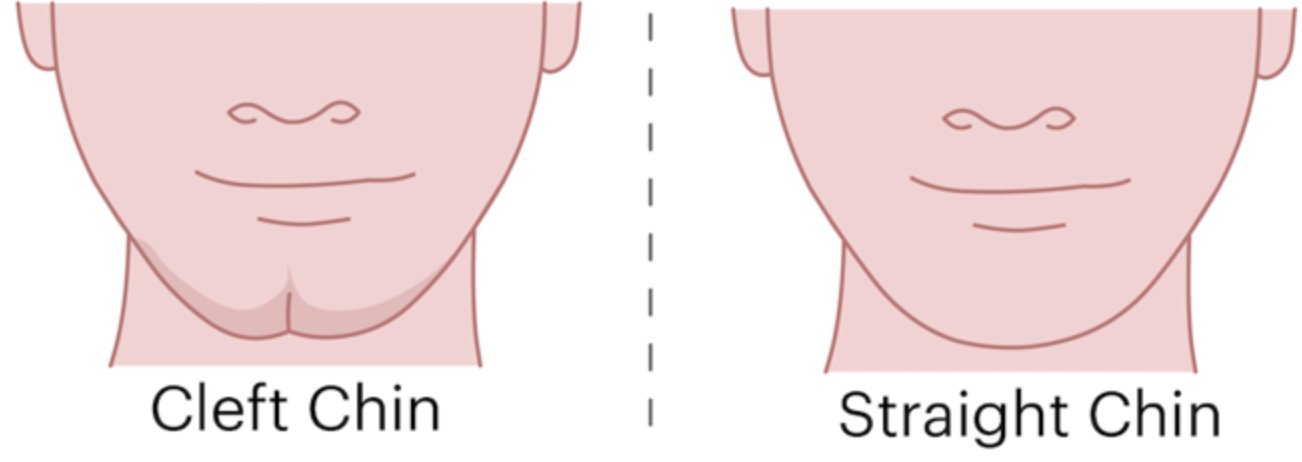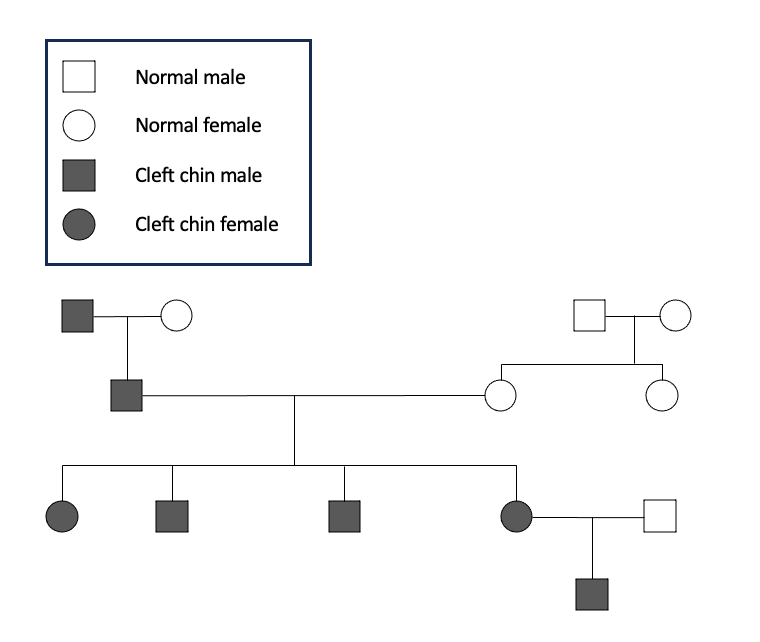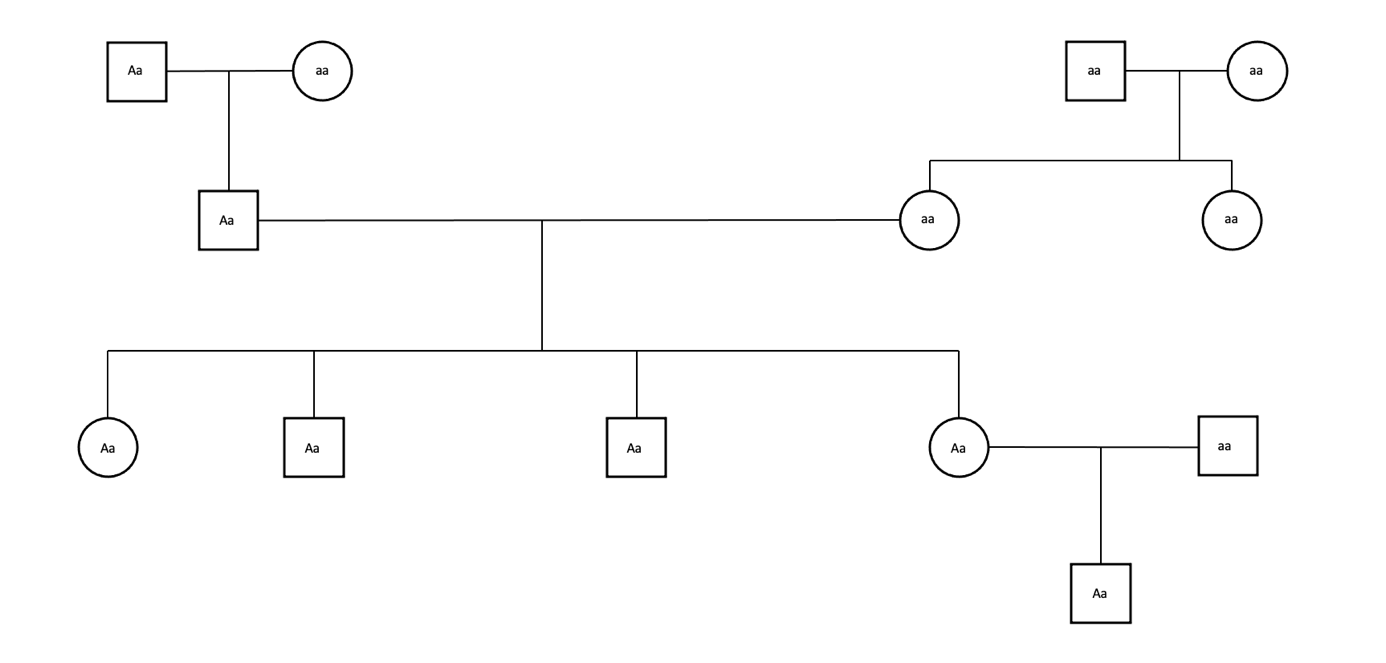Genealogical tree studies make practical sense in terms of gaining a better understanding of the pattern of inheritance of phenotypic traits. In the context of basic clinical research, such a study allows one to form a view of inherited diseases in such a way that if one relative had the disease, it helps to predict predisposition in offspring. In the present discussion, I propose for consideration a three-generation family with a cleft chin as the trait under study. Strictly speaking, a cleft chin is a cleft on the chin that is visible to the naked eye and is a unique shape of the chin consisting of two symmetrical halves, as shown in Figure 1.

The pedigree diagram below (Figure 2) shows the distribution of this phenotypic trait in this family. As can be seen, there are four siblings in the current generation of the family, and each of them has this characteristic. Among the parents of these four children, only the father has a cleft chin, and the mother does not. Among the generation of grandparents, the trait was observed only in the paternal grandfather. From the results of this observation among the three generations, it can be concluded that the trait is not related to sex but is dominant because it has become fixed in many members of this family. These results fit well with academic evidence that the genes responsible for cleft chin are dominant (UMN, n.d.).

Figure 3 shows the inferred distribution of genes for the studied trait. It can be seen that it is fully consistent with the Mendelian distribution since the probability of the dominant trait in a pair of heterozygote (Aa) and homozygote (aa) is 50%: the probability of such an event is 1/16. Surprisingly, in this family in the third generation (four siblings), all children were born with the dominant trait, which, however, does not contradict the statistical probability.

References
Markley, P. (2023). What causes cleft chin? The Tech Interactive. Web.
UMN. (n.d.). Human genetics. UMN Libraries. Web.